The Most Interesting, Spectacular Mirages Aren’t in the Desert
Spoiler alert: Try the Arctic or Sicily instead.
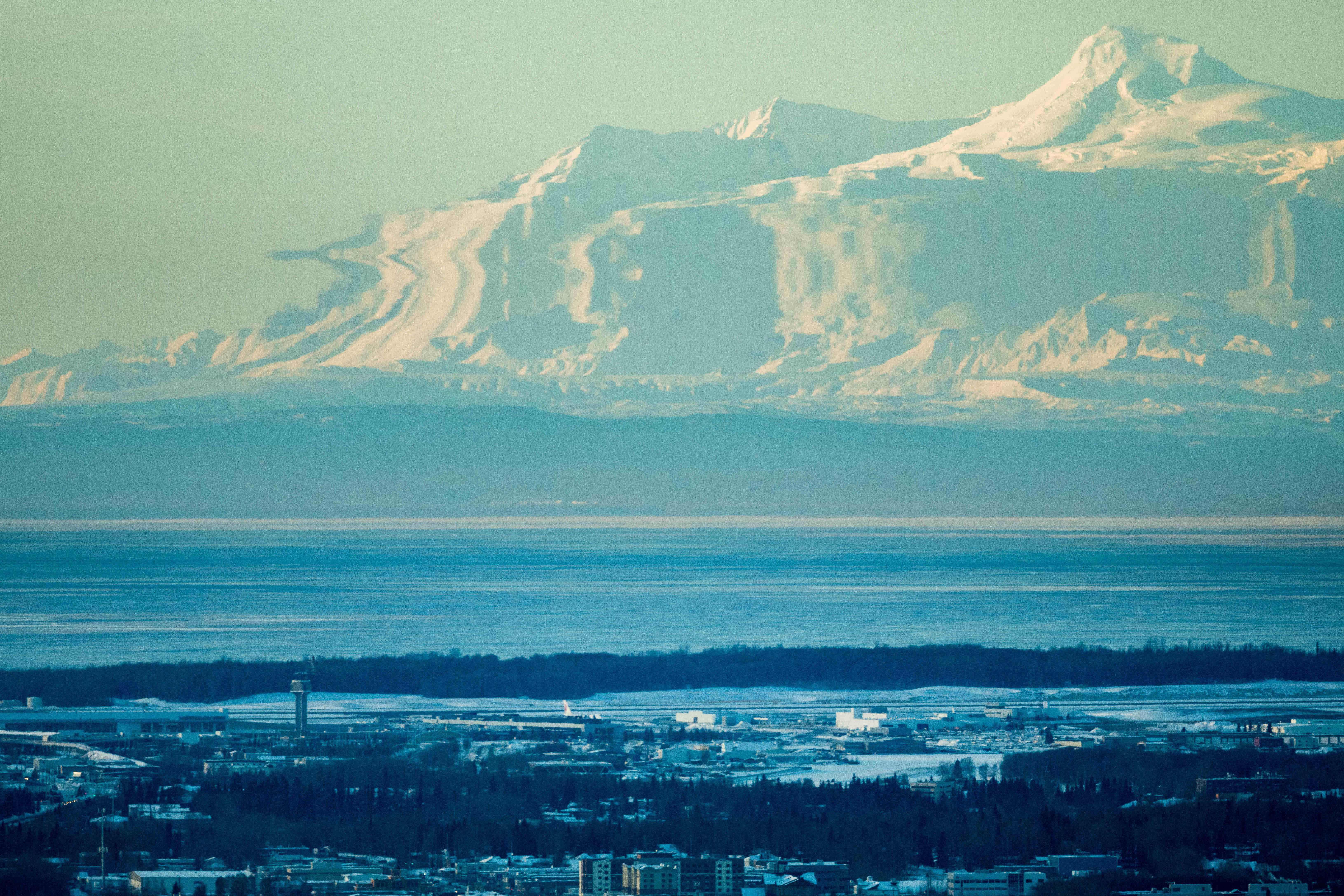
A desperate, thirsty traveler crawls among the dunes in a never-ending desert. Then something miraculous appears in the distance: the unmistakable blue of an oasis pool. You know what happens next. Of all the tropes about deserts—and there are a lot of them—the mirage may be the trope-iest.
But you don’t have to journey into the Sahara to see a mirage. In fact, the most spellbinding and storied example of this phenomenon happens in some of the coldest places on Earth and in the balmy archipelagos of the Mediterranean (probably the ideal place to kick back and get fooled by air and light).
Mirages are one of nature’s cruelest and coolest tricks. They’re not hallucinations, which are all in your mind, nor are they optical illusions, which are perceptual errors in vision in which you see something that isn’t real, according to Andrew T. Young, an astronomer and optical specialist at San Diego State University, in his online introduction to mirages. What you see when you see a mirage is a real, tangible optical phenomenon, even if your brain doesn’t necessarily know what it’s actually perceiving.
When you see light, your brain assumes it is coming to you in a straight line from the object emitting or reflecting it, says Jill Coleman, a professor of geography and atmospheric science at Ball State University. But when light passes through certain boundaries, such as where water meets air, or between air masses of different temperatures (and therefore densities), it gets bent, or refracted. And even when light is refracted, your brain still assumes it is coming to you in a straight line from its source, so refracted light holds the potential to scramble where things appear to be in your field of view. That’s a mirage.
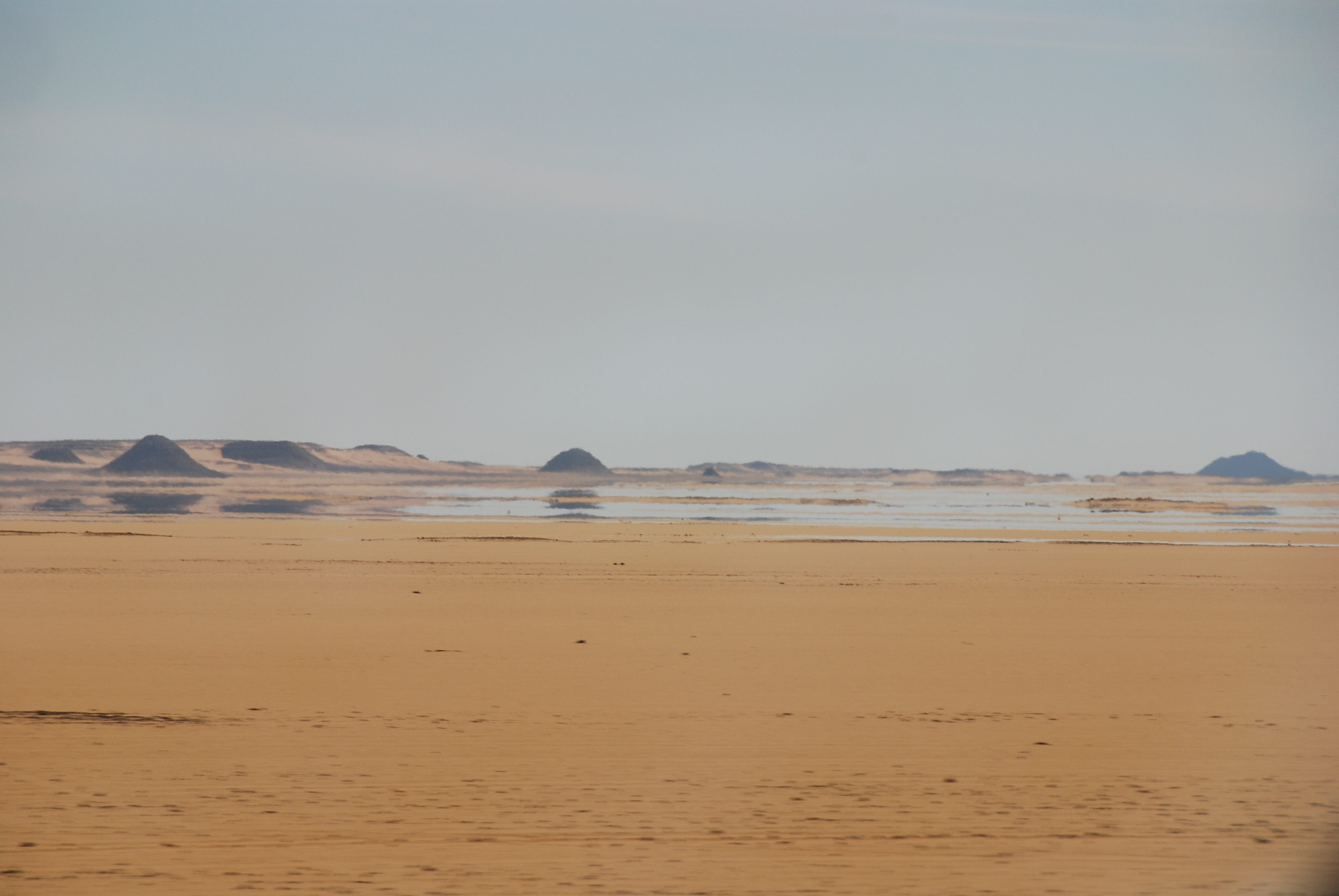
There are two types of true mirages: inferior and superior, though those aren’t value judgments. Inferior mirages project the perceived image below the real position of the object. To conjure an inferior mirage, all you need is a flat, hot surface on a windless, sunny day—conditions that are met quite frequently in the desert, according to Coleman. The sun heats the flat surface, which creates a thin layer of warmer air directly above the ground. And when there’s no wind, it stays put. This refracts the light coming to you and seems to transpose a patch of sky and cloud onto the ground. It looks an awful lot like a patch of blue in the sand. That is how light and air trick our eyes into seeing what we most desire in the desert—a shimmering pool.
The mirage isn’t dependent on how hot it is, but rather on the difference in temperature between the air just above the ground and the air above that, Coleman says. Inferior mirages can happen just as easily on bright winter days, or on a slate roof, or above a barbecue grill—anywhere a sharp temperature change turns the air gauzy and rippling. These are everyday mirages, so common and familiar that we hardly notice them.
Then there are superior mirages, which occur when the temperature differential is flipped, and the air near the ground is colder than the air above. In this case the light bends up instead of down, and projects an image above the location of the real object. Superior mirages abound in colder climates, polar regions and oceans, Coleman says. Though much rarer in everyday life, superior mirages can result in an illusion so spectacular and surprising that it challenges most people’s notion of what a mirage can look like.
The most fabulous form of superior mirage is the fata morgana. Named after the Arthurian enchantress Morgan le Fay, who lured sailors to their deaths by summoning visions in the sky, the fata morgana is one of the most complex and impressive mirages. “Morgana, who was King Arthur’s sister, had magical powers and could pull castles into thin air,” Coleman says. “And the name kind of stuck because the fata morgana looks just like castles coming out of thin air.”
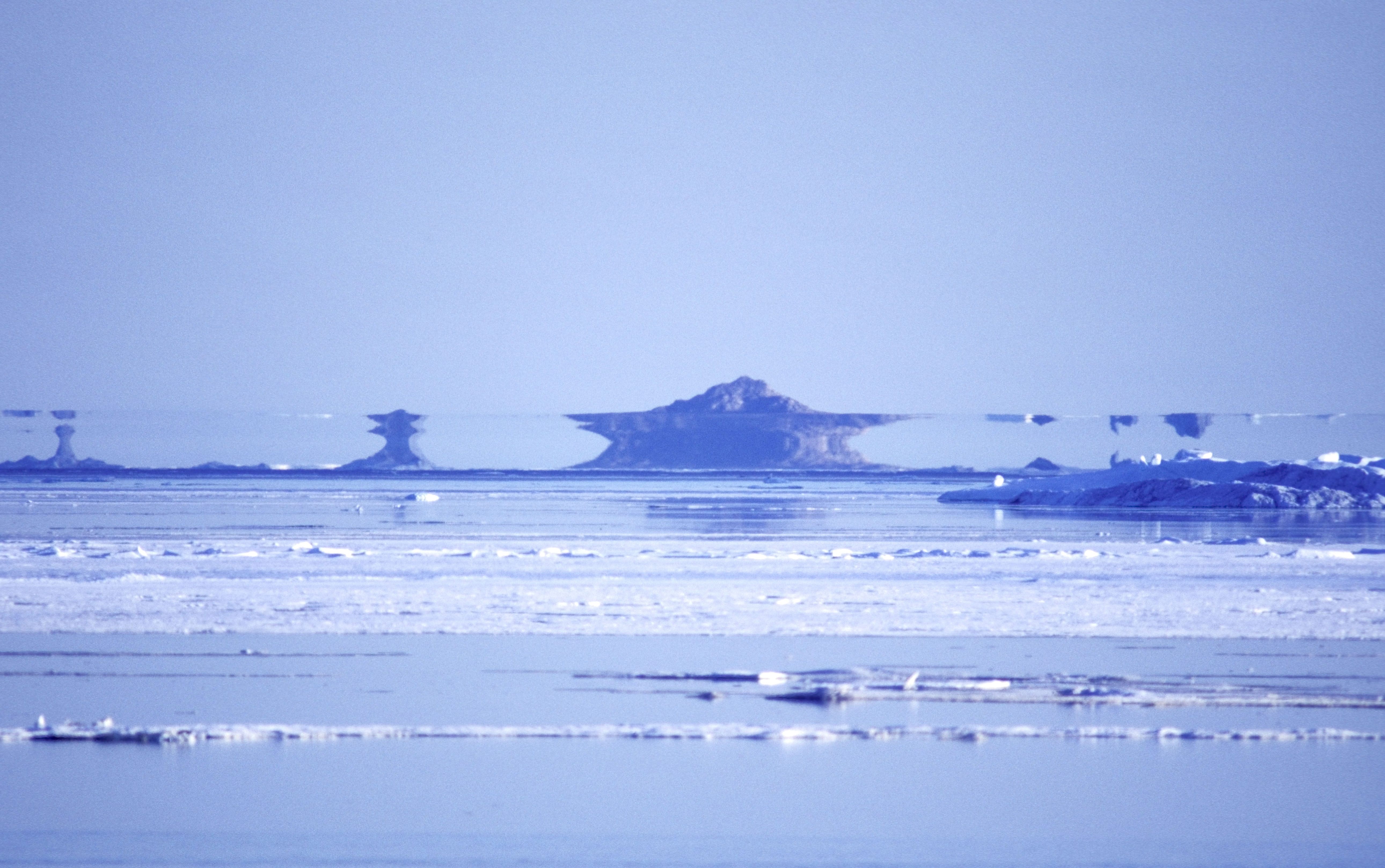
According to Young’s detailed explanation of these phenomena, the first person to mention the fata morgana by name was 17th-century Italian philosopher Marc’Antonio Politi, who wrote, “The air magnifies in such a way that it makes small things appear very large, and those far away become near, so that on these shores are seen new cities, infinite buildings, high towers, superb ports, and dense forests; and this vision the local people call the Fata Morgana, which they say shows her greatness.”
Fata morganas are superior mirages by definition, but they belong in a class of their own. In the most spectacular versions, the light passes through what are called atmospheric ducts with additional thermal boundaries, resulting in not just an inverted projection, but also one that is magnified and exaggerated vertically. “So a teeny, teeny island can look like a big scaling tower,” Coleman says. Fata morganas may be responsible for some alleged UFO sightings, when people spot a distant refracted disk of light and assume it must be of extraterrestrial origin.
Fata morganas have a lot of moving parts and are inherently unstable. Within a matter of seconds, the image can morph from a superior to inferior mirage and back again. Traditionally they have been the Rorschach tests of mirages. You can see anything you want in them: ghost ships, floating cities, islands that hang like clouds. In rarer, spookier cases, the fata morgana can project an image from just beyond the horizon, defying the very curvature of the Earth.
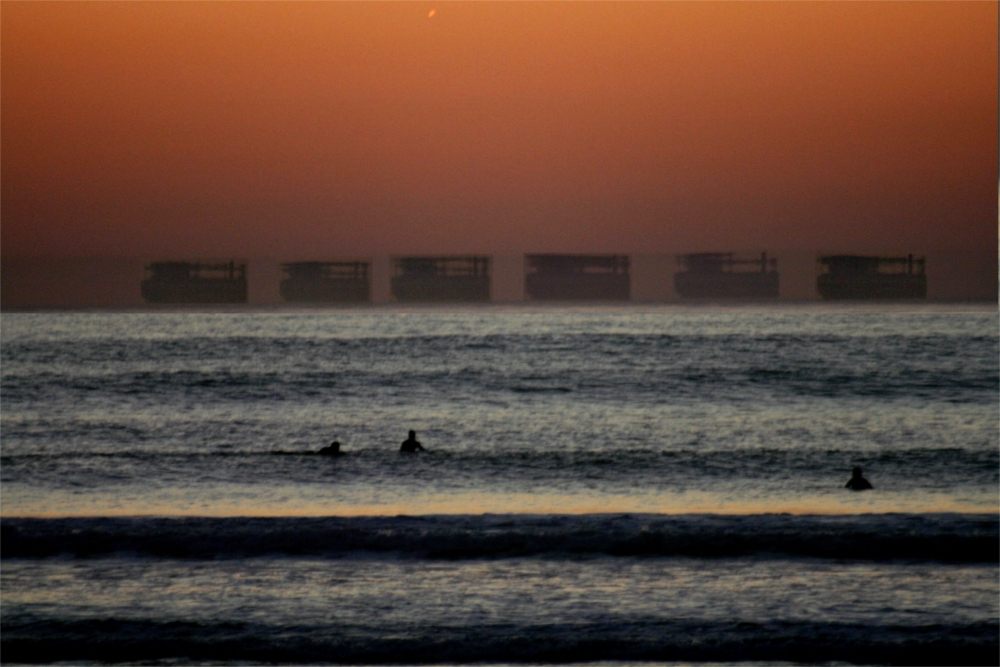
Fata morganas appear most often in the Arctic, but they’re most closely associated with the Strait of Messina, between Italy and Sicily. This body of water is ripe for fata morganas, Coleman says, because of the abundance of both ship traffic and tiny islands off the coast of Italy. When paired with the relatively unmoving expanse of the Mediterannean, these large objects have a tendency to ripple upward so often that they confused many a sailor of yore. For example, it’s probable that historical sightings of the Flying Dutchman—a ghost ship cursed to sail the seas for eternity—could be chalked up to fata morganas.
In the 19th and 20th centuries, fata morganas also probably hoodwinked polar explorers who believed they had discovered land masses that don’t exist. The best-known of these phantom islands was first recorded in 1906 by American explorer Robert Peary, the first man to reach the geographic North Pole, according to Mental Floss. In his diary, Peary called the distant shape Crocker Land, but when he returned to America, other explorers who’d traversed the area accused him of lying. In 1913, Donald MacMillan, one of Peary’s former assistants, set off on an expedition of his own to prove the existence of Crocker Land and salvage Peary’s good name. And MacMillan did sight Crocker Land in the distance—or so he thought. Piugaattoq, an Inuit hunter who accompanied the expedition, broke the news that there was nothing out there. Piugaattoq called it poo-jok, the Inuit term for a distant Arctic haze. MacMillan refused to listen, and pressed on for five days, until it became apparent that there is no Crocker Land. The expensive expedition was an abject failure.
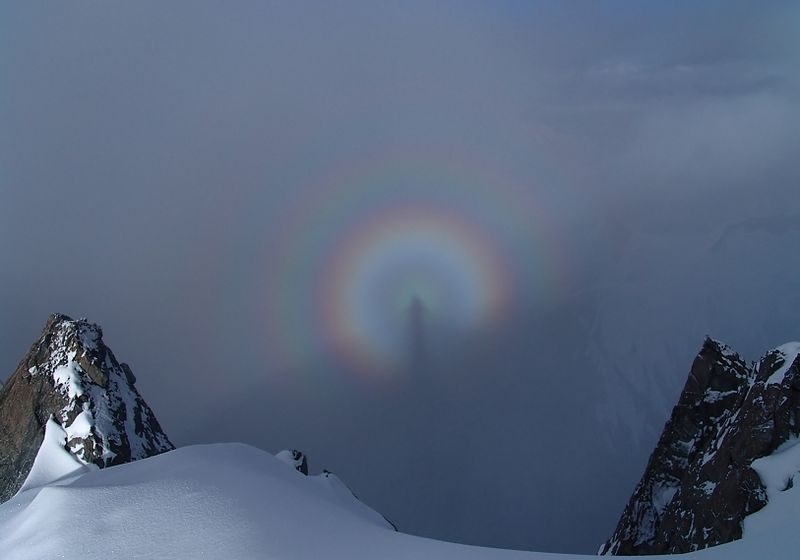
Some mirage-related phenomena eschew the need for a flat surface, such as rainbow-rimmed haloes in the sky known as “glories.” They’re not true mirages, but operate under the same physics, in this case, when light is refracted by a change in air temperature, with the presence of water droplets. The most bizarre of these is called the Brocken Spectre—the illusion of a tall shadow of a person standing within an enormous rainbow halo of light.
The silhouette or shadow is simply the refracted shadow of the observer, but you can imagine that Brocken Spectres often appear to be otherworldly ghosts. “You only see a Brocken Spectre if the sun is at your back, so it’s more common for mountaineers to report them,” Coleman says. “It looks spooky and heavenly, but if you bounce around you’ll see it’s you.” Like the desert mirage, the Brocken Spectre has made a few cameos in popular culture—in particular, for some reason, in giant tomes of post-modernist literature. The phenomena appears in both David Foster Wallace’s Infinite Jest and (appropriately) Thomas Pynchon’s Gravity’s Rainbow. Yet despite its literary aspirations, the Brocken Spectre boils down—like any other mirage—to the physics of air and light.
“Whenever people report iridescence in the skies, moving light, mirages, or haloes, it all comes down to the composition of the atmosphere at the time,” Coleman says. She recommends taking stories of these phenomena but with a healthy dose of caution. People, like mirages, tend to exaggerate.











Follow us on Twitter to get the latest on the world's hidden wonders.
Like us on Facebook to get the latest on the world's hidden wonders.
Follow us on Twitter Like us on Facebook